The Rise of The Gremlins and E.S. Grit
E.S. Grit, known for its singles and a self-titled album, began as The Gremlins in the 1960s at Cambridge High School. They gained local fame through gigs at birthday parties, at the Carousel club, and a 16-week residency at The Crazy Horse in Washington, D.C.
Despite personal challenges and the tragic loss of their bassist, Joe Brocato, in 1971, the band continued to perform and influence the local music scene, with their legacy enduring through reunion events.
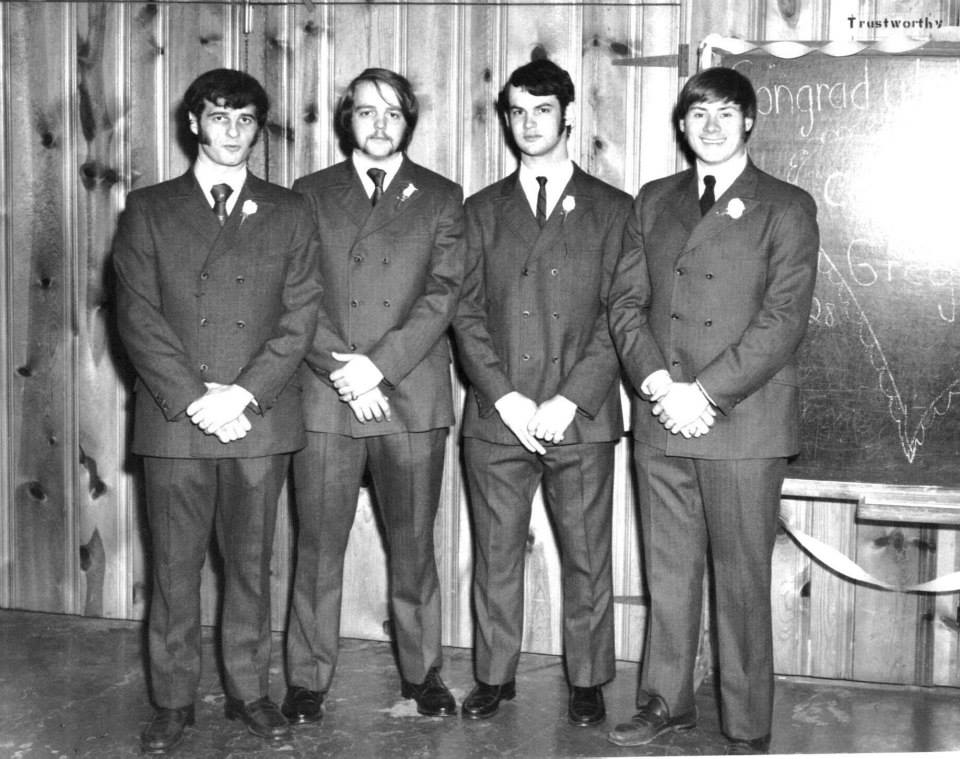
The High Five: 1964-1965
Back in 1964, three high school seniors at Cambridge High—Joe Brocato, Steve Tyler, and Greg White—were inspired by the surging wave of rock and roll from bands like the Beach Boys and The Beatles. Their enthusiasm to learn guitar was palpable, so they passed around a borrowed guitar from one of Joe’s friends, sharing chord books and enthusiasm, slowly building the foundations for what would become a beloved local band.
Bill Handley, then a 10th grader, also learning guitar from his father’s acoustic in a folk group, joined them to play some bass. After some initial misadventures with drummers, it was decided that Bill would pick up the sticks, becoming the first full-time drummer. This laid the groundwork for a band that would eventually capture the hearts of many Cambridge teens.
The Early Members and The High Five’s Transformation
The High Five started gaining momentum, with members borrowing instruments and learning from local pawn shops like The Dixie Bargain Center. By inviting other musicians to join them, like Scott Frey and Doug Turner, they were able to piece together a band, inspired by other groups like The Dimensions, who were frequenting local venues. Eventually, Steve Tyler picked up the bass, and the band found a home for practice at his parents’ kindergarten building.
With the group finding its rhythm, they started getting gigs at local birthday parties and events, raking in a modest $10 for a performance at Susan White’s Sweet 16 party. A video surfaced of them playing at the kindergarten, which captures the early days of a group poised for success.
The Gremlins: 1965-1967
After a few transitions, including Scott Frey stepping away, the band rebranded as The Gremlins, due to their penchant for surfer music—a fitting name considering surfers often dealt with “gremlins” on their boards. They began playing larger venues like the American Legion, the Armory, and various country clubs. As seniors, they balanced school with music, playing on weekends, and honing their craft, which earned them a growing following in Cambridge.
College commitments meant traveling back to Cambridge on weekends, but the gigs continued to grow. They played in venues from College Park to Baltimore, establishing themselves as a key part of the teen scene around Cambridge.
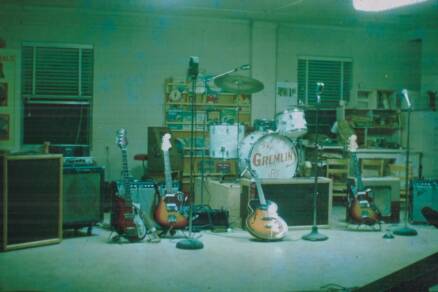
The Carousel and Early Success: 1967-1968
Their popularity caught the attention of Edwin Travers, a local businessman, who saw an opportunity to provide a safe space for teenagers to enjoy music and stay out of trouble. Travers transformed an old bar on Route 16 into a venue called The Carousel, with The Gremlins as the house band. The band embraced the opportunity, even assisting with renovations, leading to a successful run where hundreds of teens would gather for music, dance, and good times.
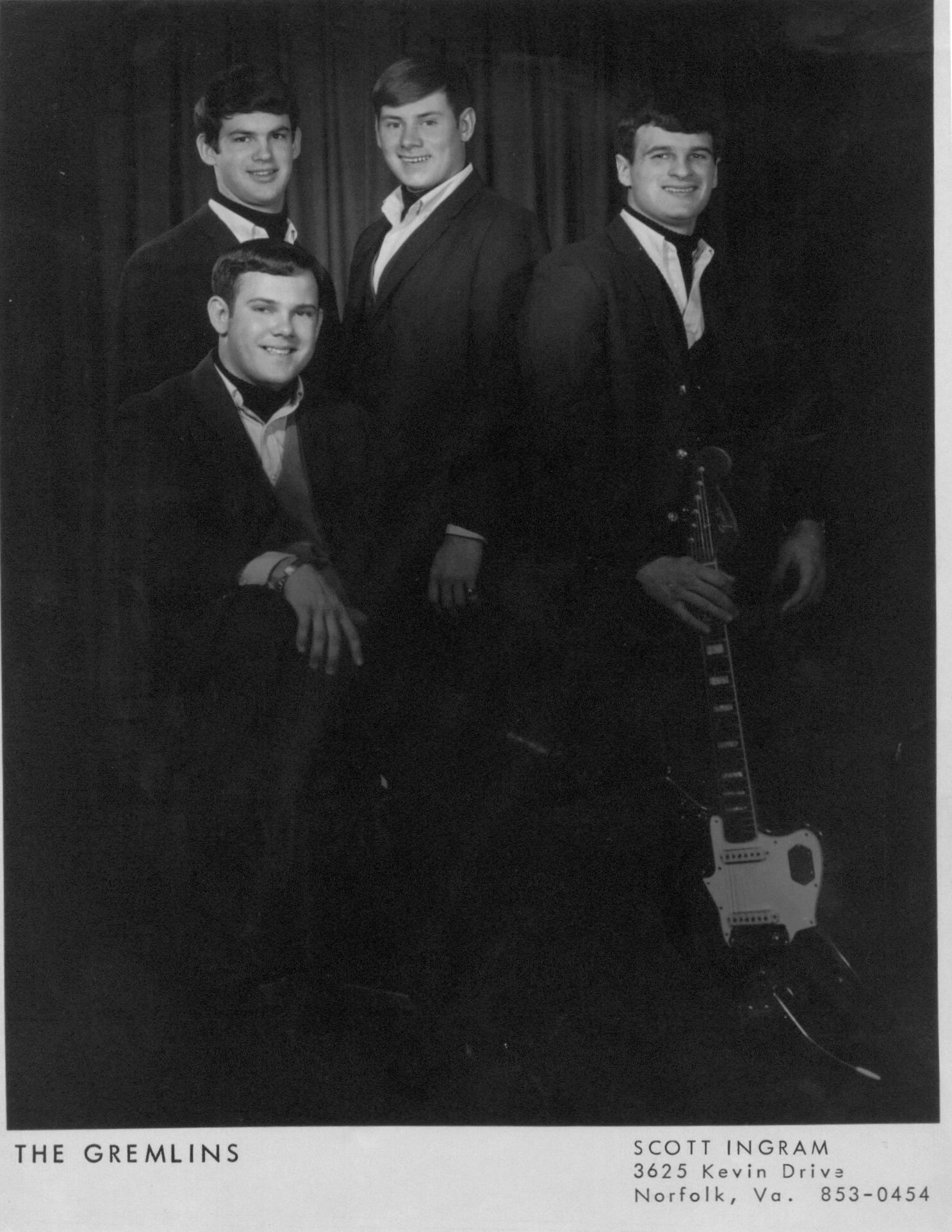
The Carousel was open on Wednesday, Friday, and Saturday nights in the summer, and Friday and Saturday during the winter. The Gremlins entertained countless teenagers, solidifying their place as a local phenomenon.
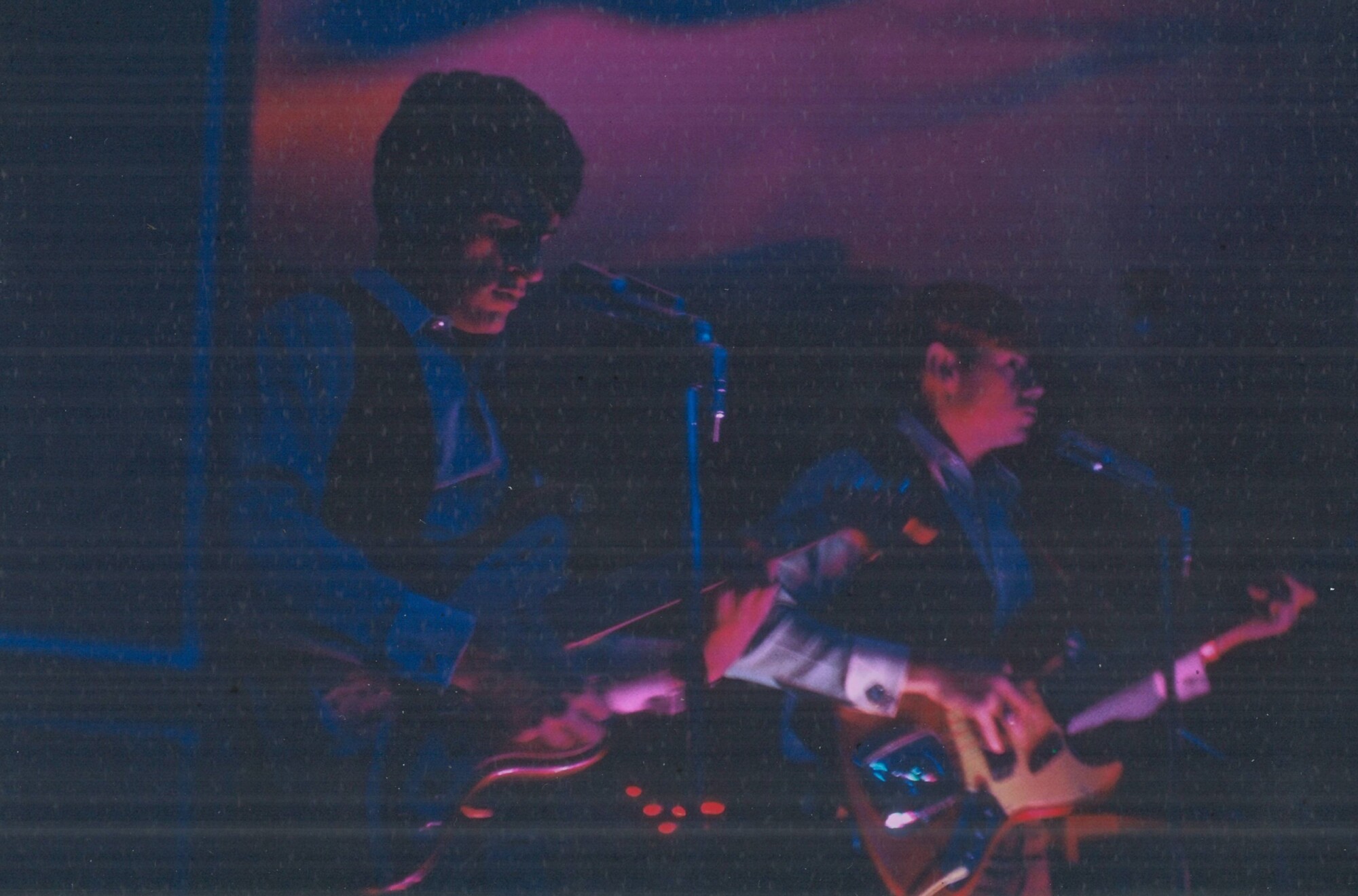
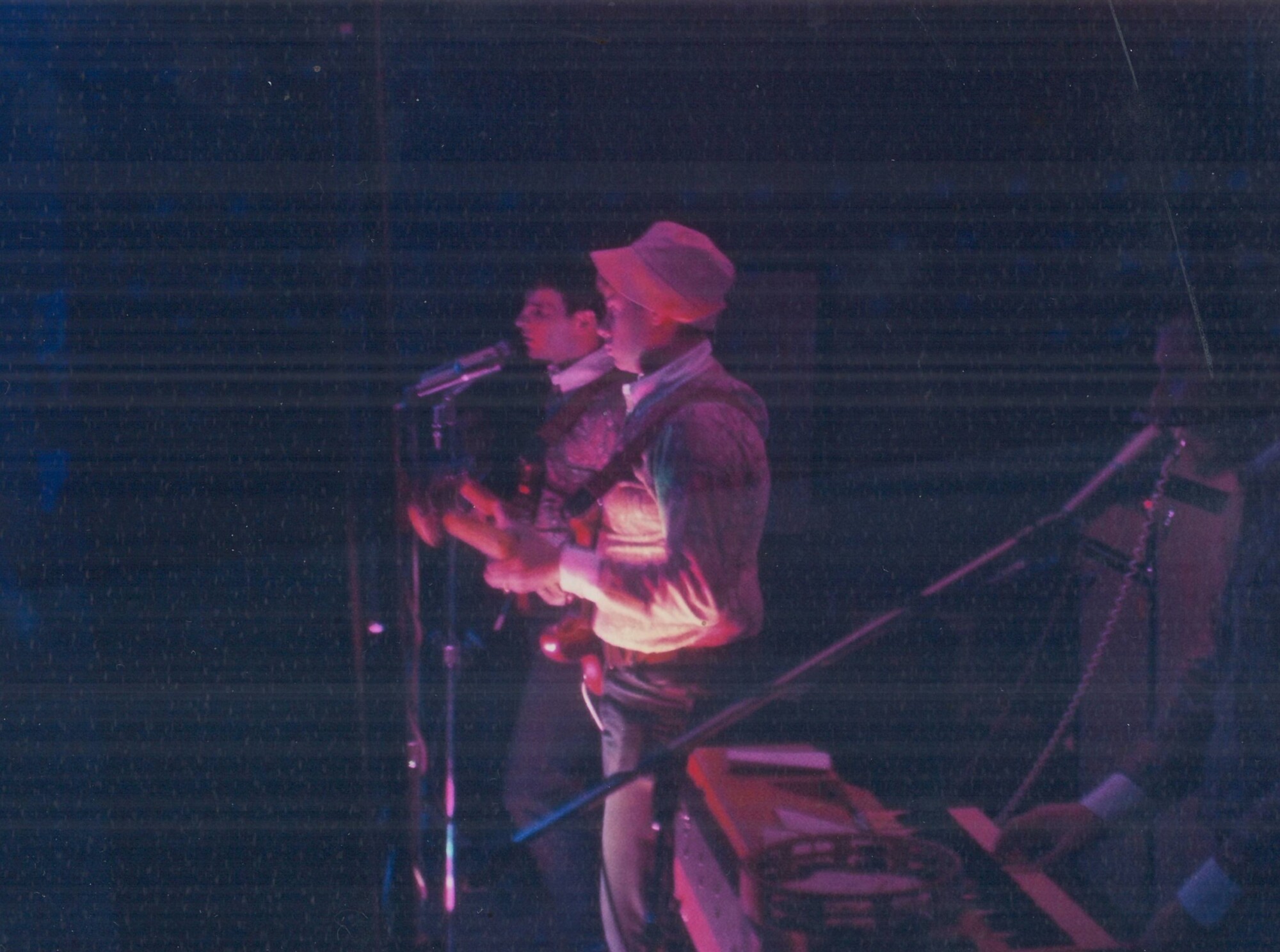
E.S. Grit and The Road to D.C.: 1967 to 1968
As college commitments and new responsibilities took hold, the band experienced a transition. Steve Tyler, attending Johns Hopkins University, left the group to focus on his studies. With this transition, when Steve left, Joe Brocaton moved to bass, and Ricky Cannon joined on organ and vocals. They continued to perform as The Gremlins at Camb and other colleges.
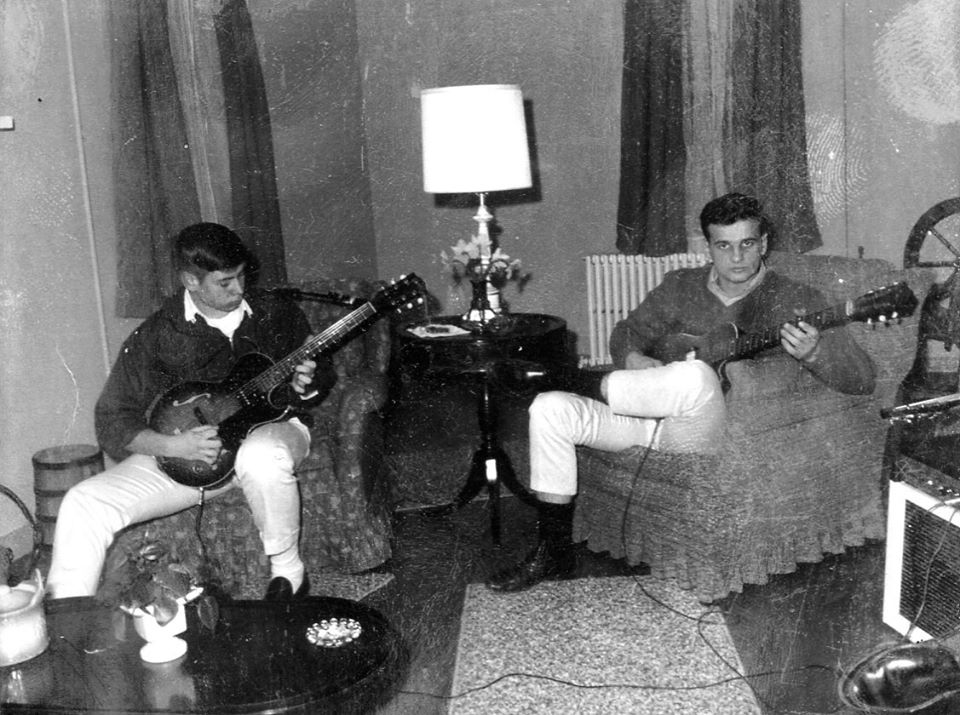
The band performed as The Gremlins and, in the summer of 1968, lined up a gig in Virginia Beach (it might have been the Pirates Den or a similar venue). They were all set to go that summer when Ricky informed the band that, for personal reasons, he could not go. Needless to say, the band had to make a change. Rick left, and John Johnstone joined on vocals, organ, and guitar. After a few months, around February 1969, the band changed their name. The Gremlins name E.S. Grit was inspired by Joe Brocato’s childhood job delivering the Grit newspaper.
Summer of ’69 was when the band auditioned and got the job in DC at the Crazy Horse. Funny thing was, that they auditioned on a Sunday night, that was the night the regular house band took off. The owner had another, smaller less known club he needed a band for, and Sunday was our audition night. A few days later, they called and said they got the job….BUT, it was for the Crazy Horse and NOT the smaller venue. The old house band went there.
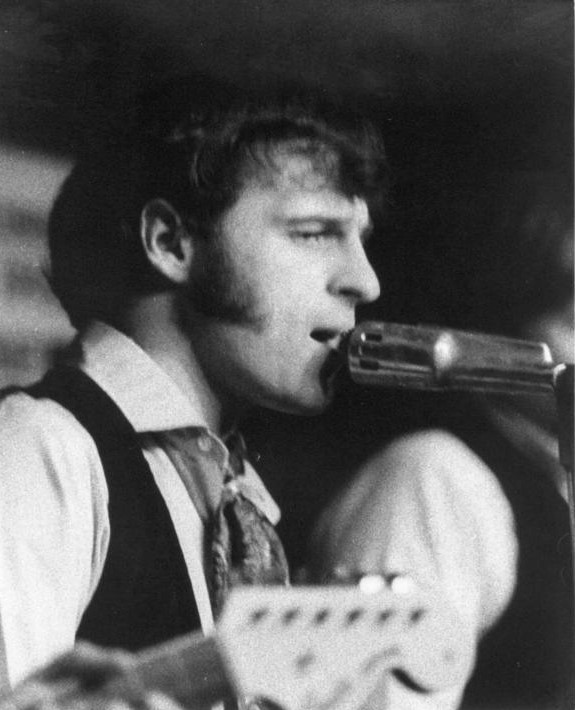
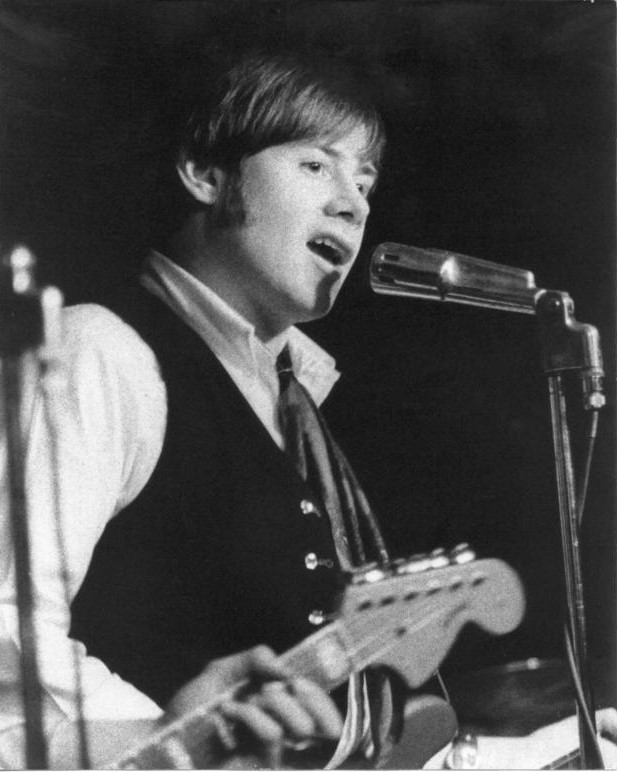
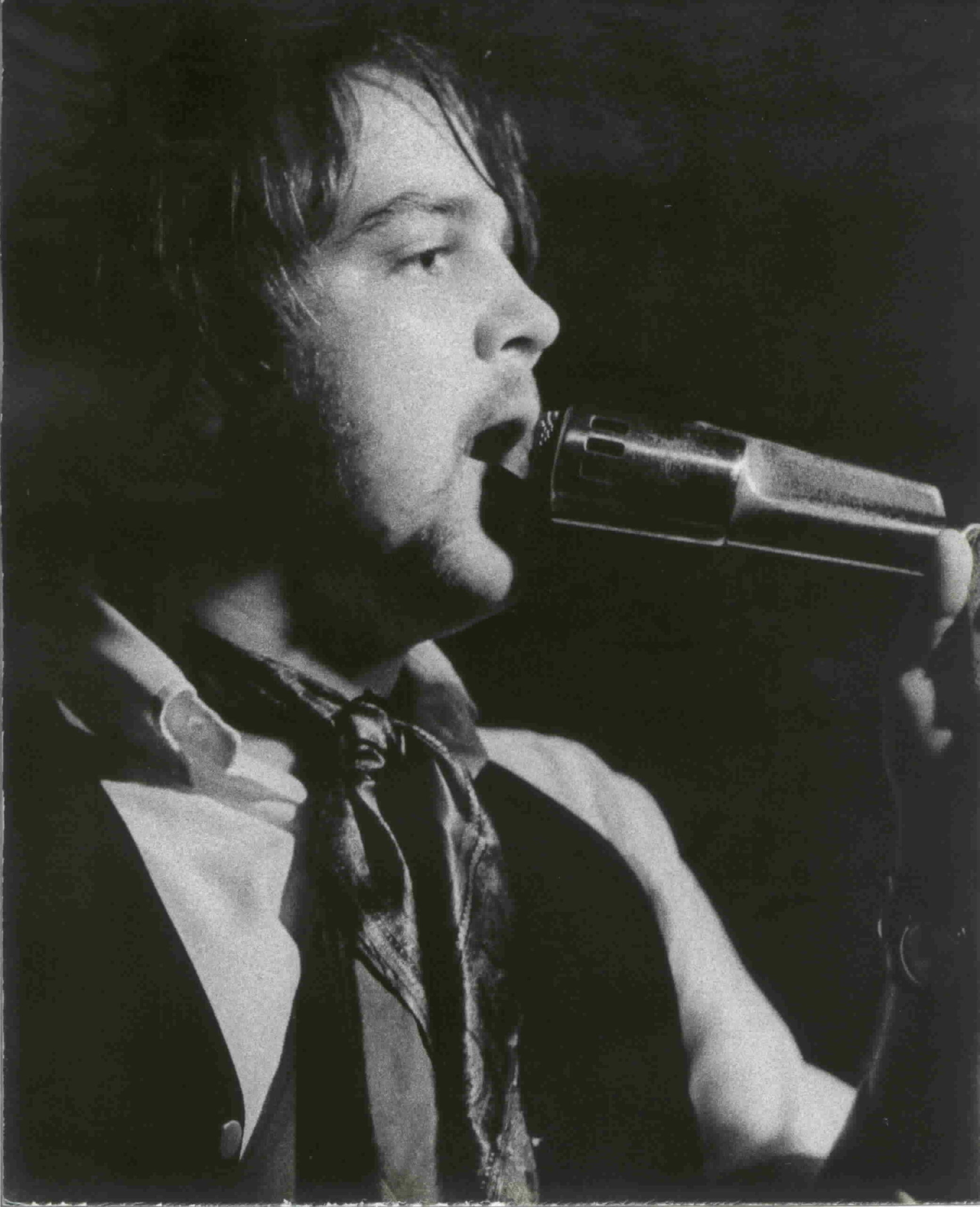
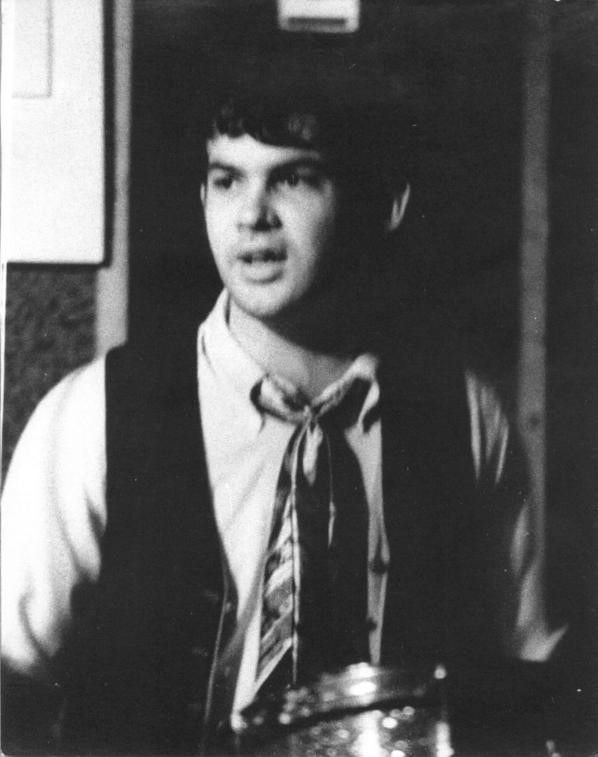
E.S. Grit had gained traction with their unique style and tight harmonies gaining them a 16-week residency at The Crazy Horse in D.C. During this time, they polished their performance skills, sometimes playing for 20 straight days. It was an intense period of growth, with hard work paying off.
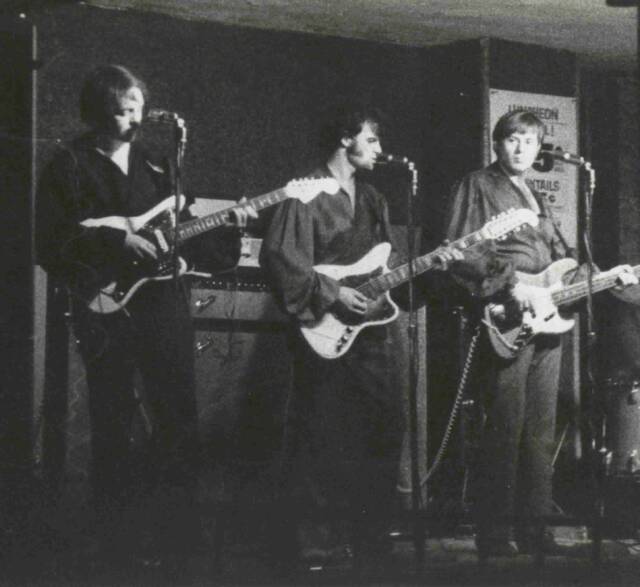
A Changing Tide and Personal Challenges: 1970-1971
By late 1970, Greg White faced a crossroads. A new teaching job and marriage made it difficult to continue with the band, leading to his departure. Steve Woolston took Greg’s place on lead guitar and played with the guys—Joe Brocato on bass, Bill Handley on drums, and John—until Joe tragically passed away in 1971, leaving the band in turmoil. After Joe died, Bill took over bass duties, and David Lewis became the new drummer. Interestingly, during the late ’60s, the band had a gig at the Armory where Bill was hospitalized, and they needed a drummer for the night. They used David Lewis, never knowing that years later he would join the group! Despite the setbacks, the group soldiered on with new members and a revamped direction.
E.S. Grit’s ascent was swift, with the band quickly becoming a fixture in the Dorchester County music scene. Their approach to music was both disciplined and innovative, with a focus on group vocals and recreating popular songs with precision. The band’s popularity was undeniable, playing at various venues across the region, from the Armory to high schools and popular nightclubs.
However, the band faced a devastating setback in 1971 when Joe Brocato, their charismatic bassist and vocalist, tragically died in a shooting accident. Joe’s loss sent shockwaves through the band, but with the encouragement of Joe’s father, E.S. Grit regrouped, with Bill Handley switching from drums to bass and David Lewis joining as the new drummer. This restructuring allowed E.S. Grit to continue playing and eventually record original and cover songs.
Their music journey included trips to New York’s A&R Studios, where they recorded demos, hoping to secure a recording contract.
Continuing Legacy and the Road Ahead
Despite the loss of key members and various transitions, E.S. Grit continued to inspire and attract fans in the Cambridge area. The group eventually reformed with a new lineup, with each transition bringing new energy and creativity to the band’s journey.
Though the original band’s story had its ups and downs, the legacy lives on through the memories and the music they created. Even after the band’s disbandment, members continued to play music and inspire new generations. Reunion performances, special events, and other gatherings kept the spirit of The Gremlins and E.S. Grit alive, proving that the bonds formed through music are never truly broken.
E.S. Grit released three single 45’s, ‘Petty Insinuations’ / ‘Under My Thumb’, ‘Tired of You’ / ‘Not Going to Leave’, ‘Let Me Roll It’ / ‘Make It Right’ and an LP.
E.S. Grit’s journey into the music world started with their first single, a cover of the Rolling Stones’ ‘Under My Thumb’. On the B-side, they included an original song called ‘Petty Insinuations’. This track was written by Steve Woolston, capturing the angst and frustration of youth. The title was suggested by David Lewis, another member of the band, when they needed a name for the song.
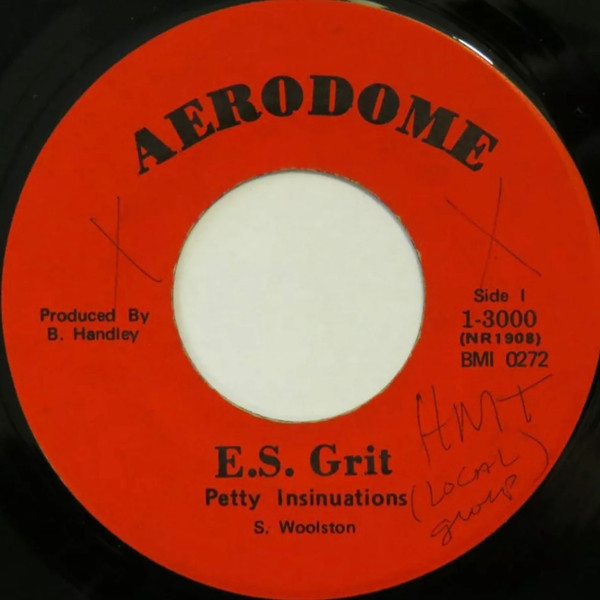
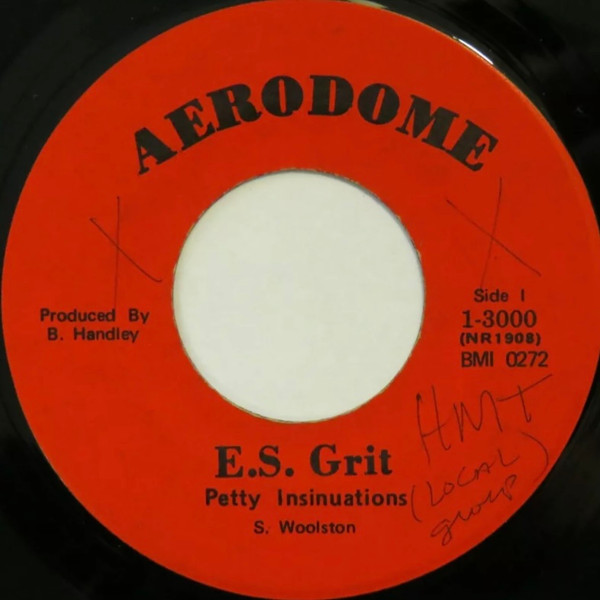
For their second release, the band decided to create their own label, calling it BigLiz. The name came from a local legend about a ghost named “Big Liz,” said to haunt a nearby river and bridge. The legend gave the band a sense of connection to their local roots. The label’s logo was pretty cool—it featured an iguana painted on a Fender Stratocaster guitar, a nod to John Johnstone’s own decorated guitar.
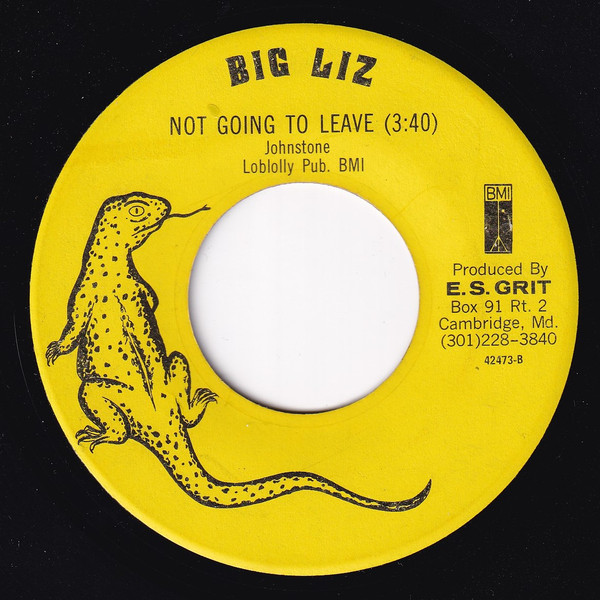
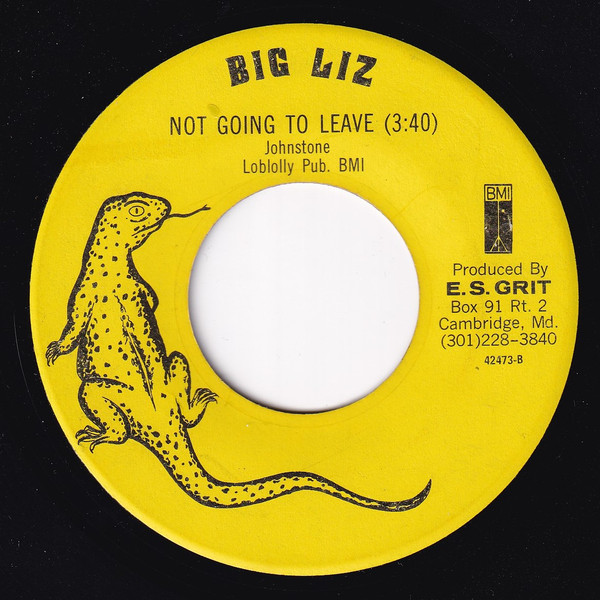
E.S. Grit’s third release was an eight-track tape album with mostly cover songs they performed at their gigs. This album was titled ‘E.S. Grit’ and was sold in the local area. It was released under their own label, Aerodome, which was a misspelling of the word “aerodrome,” suggested by a friend of the band. The cover art featured sketches of the band members, drawn by a local artist friend.
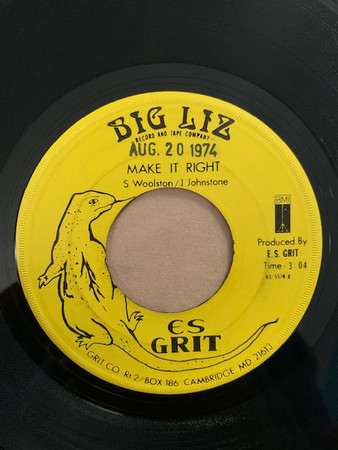
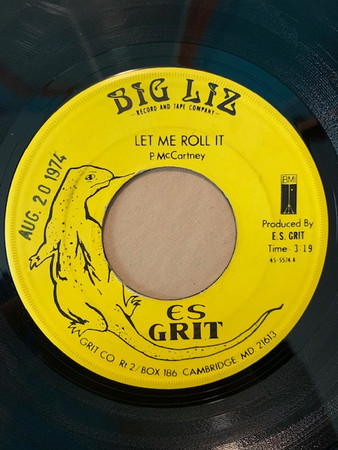
Did you play a lot of gigs? What are some venues you played? What are some of the bands you shared stages with?
Greg White: From 1965 to 1971, the original band played many gigs. As the article on this website states, a member of the Cambridge community, who had two teenage daughters and wanted a safe venue for them to attend, remodeled an abandoned bar and turned it into a teenage club. This club served as the house venue for The Gremlins/ES Grit for many years.
The band played in various locations from Cambridge to D.C., College Park, Baltimore, and beyond. Eventually, The Gremlins reformed, replacing the original organ player and adding a new one. They also changed their name to ES Grit. In 1969, the band played at the Crazy Horse in D.C. for 16 weeks. Over the following years, they continued to perform at many different venues.
Are there any other unreleased recordings of the band?
Greg White: Early recordings of The Gremlins/E. S. Grit are stored on numerous 8-track tapes that I have. A couple of these tapes have been converted to MP3 format and are available on the website here. However, due to a lack of time and not having another tape player, the rest of the tapes haven’t been converted to playable versions. Given that most of the former band members (Bill, Steve, and I) are 76 or older, these tapes might never be transformed into digital formats. Time and age often resolve many problems.
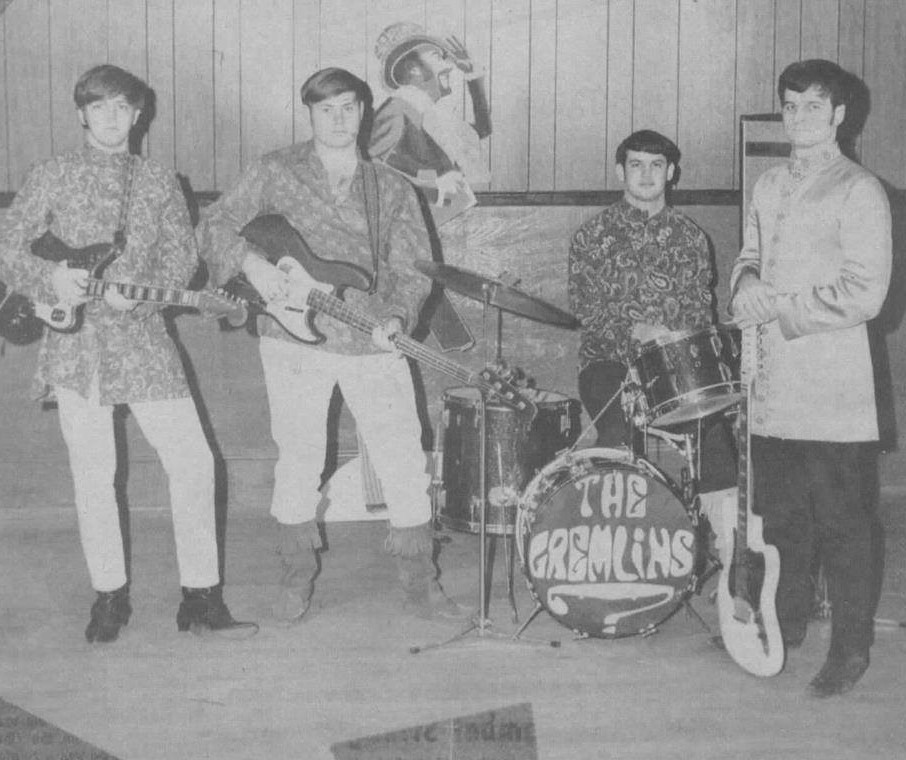
You had a reunion?
Greg White: As the Class of 1965 approached its 40th reunion, an intriguing idea surfaced—could we orchestrate a band reunion? In March, Doug Turner, Ricky Cannon, Steve Tyler, and I gathered in Cambridge to test our rhythm and see if we could still play a tune or two for the upcoming event.
What began as a tentative meeting evolved into weekly practices, expanding our repertoire until we ultimately became the main entertainment for the reunion, leading to the cancellation of the DJ. By August 2005, we had rehearsed and revived sixteen songs, culminating in a memorable performance at Suicide Bridge Restaurant. The four members of the Gremlins/Grit played for three hours that night at the 40th reunion, 35 years after our original performances. We enjoyed it as much as we did back in the day.
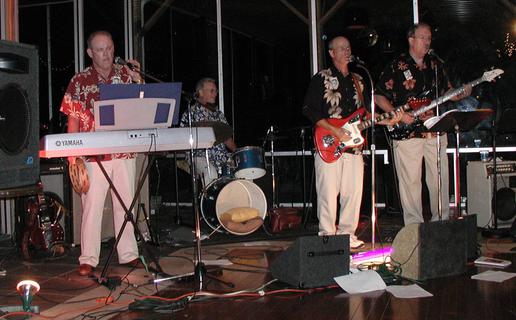
Looking back, what was the highlight of your time in the band?
Greg White: Reflecting on my favorite memories from E. S. Grit and the related bands I was part of in the 60s and 70s, several moments stand out. I can only speak about the years from 1964 to 1971, since all the band’s recordings were done after I left. Two highlights from my time were when Ed Travers opened a club just for us to play in on weekends, providing a safe place for Cambridge teens to hang out, and when we landed a 16-week gig at the Crazy Horse on M Street in downtown D.C. Those were memorable experiences, along with playing at Richie Coliseum in College Park, Maryland.
Another key memory was being offered a summer job in Virginia Beach in 1968. We had to refuse because our organ player didn’t want to relocate, which led to his expulsion and our transition to becoming E.S. Grit. Although it was a tough decision, it brought about a significant change for the band.
But the most fulfilling aspect of playing with the band was seeing the joy on the faces of our audience. The satisfaction from performing in front of people we knew and who appreciated us was incomparable. Local gigs were always the most enjoyable; there’s a special connection when you play for people who know you. Even today, I still hear stories about people who pursued music because they saw us perform and were inspired by our passion.
Quitting the band to start my teaching career was one of the hardest decisions I ever made. Being recently married and fresh out of college, I felt it was the wisest choice. While it was difficult to leave behind the camaraderie and thrill of performing, I knew we would never become a national sensation; we were a good local band, and that was enough.
Ultimately, I take pride in the fact that we were a band that loved our audience, and they loved us. It’s incredible to know that some people who once stood in front of the stage, watching and learning, have since gone on to play in bands or teach music. It’s a testament to the positive impact we had, even if we never intended to be more than a group having fun. I wouldn’t trade those memories for anything.
Greg White: I think I’ve probably said too much already, but every so often, someone like you comes along and brings back all the great memories of the band. At 76 years old, I still go to open mics and play some of the songs I performed as a member and founder of The Gremlins and ES Grit. Those memories of the old days return and wash over me as I play those few songs, memories I will cherish until the day I die. Once a performer, always a performer.
I probably would have enjoyed the last days with the band when the recording was being done, but a new teaching job, a new wife, and becoming a part-owner in a seasonal motel at the beach made it impossible to continue those great times with the band. Even though the playing stopped, the memories live on with me.
Thank you for your interest in older, “washed-up” band folks. Your efforts are much appreciated, and I hope others value them as much as I do. Thanks again, Greg.
Klemen Breznikar
Headline photo: E. S. Grit album from 1984 | John Johnstone, David Lewis, Bill Handley, Steve Woolston
E. S. Grit Website

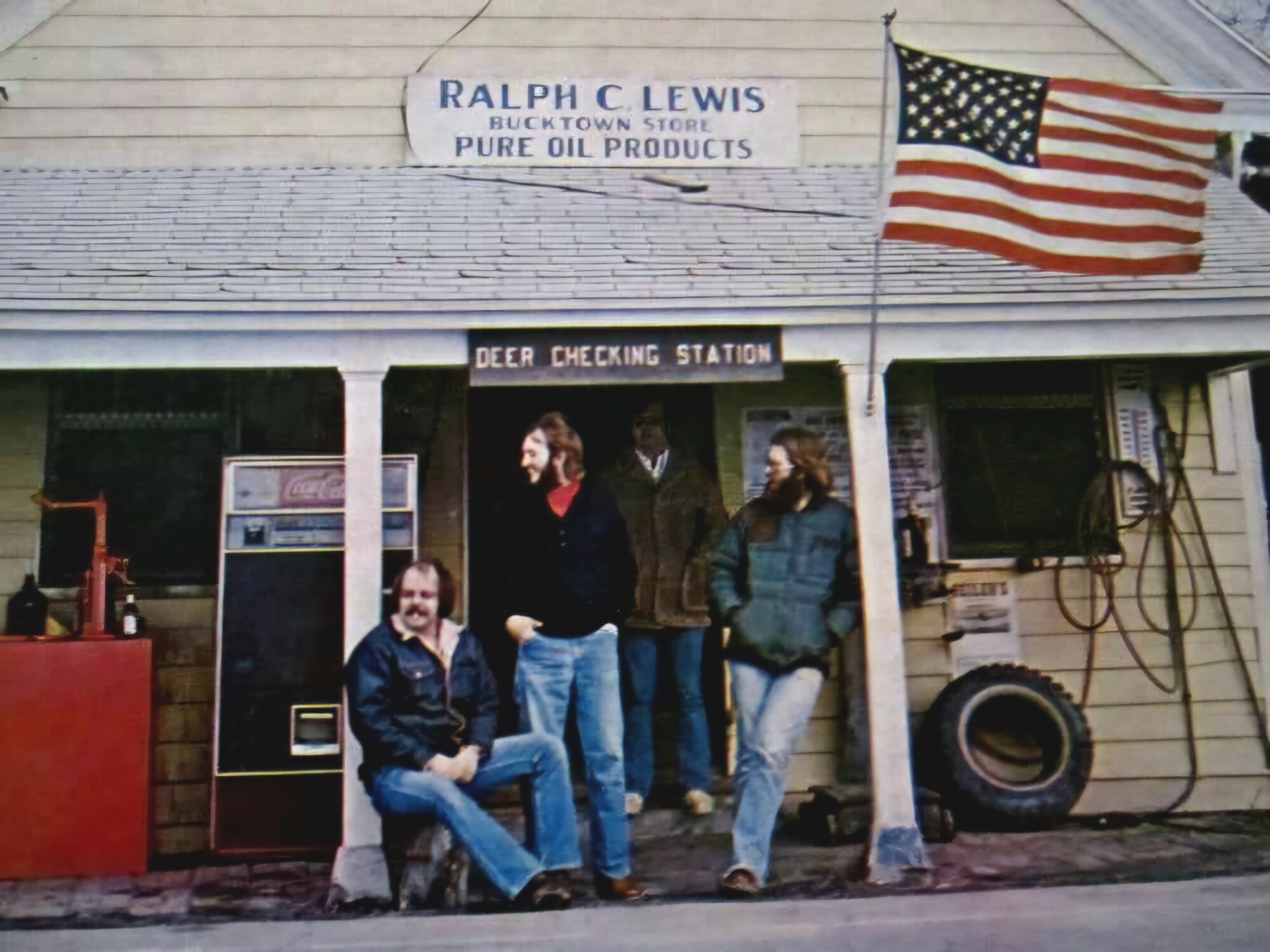



Thanks Greg, enjoyed your article muchly. Of course I didn’t remember hearing you all preform as they were the years that I was going strong in bands also on the shore. “The Casuals (Buddy Mowbray, Frank Hughes, Bill Routzahn, Sarge Johnson), then the 7 piece soul band with horns, “The Knightcappers” ( Bob Ewell, Bob Whitten, Jack and Jesse Faulkner, Buzz Thompson, Wallie Simmons) Of course I knew all of your band members and their parents also, as most of us grew up in the same area. I went on and played for some 38 years total including the beach area. Best times of our lives, and missed dearly. God Bless, Sarge
Love the story!
well researched and written. curious about the author and his sources for the story? many of these events and dates are garbled in trivia questions these days. thanks for the clear chronology.
Regarding “his sources for the story” and “events and dates”…..The author wanted input from any and all past band members. He contacted me, and I sent a copy of his request to Steve Tyler, Bill Handley, and Steve Woolston (via Bill) and requested they send him any info/feedback they had, along with sending him a link to the band site I had set up detailing the band history from my, and other members’ memories. His link to that is at the very end. Since the 4 of us (other than the females that were in our lives at that time) are the only existing members left from The Gremlins/ ES Grit, I thought he could gather enough for an article. Most people seem to like what he did, and if this article and my website would “go away” in the future then I guess the band history will just be passed down from person to person, or relative to relative via word of mouth. In a few years, most of us who care about this will be dead, and a new generation will share their own memories! Hopefully, they will keep records of their early years, and value them. So many young people appear to have little value for history any more.
77 years old I am…and it seems like yesterday that we were all going to the carousel to hear these guys play…remembering the black lights that made everyone look good..(Even me:)..God I miss those days but they are fun to look back on
I would like to get in touch with one of the bands members. If one of you can get this message please call Richard Slacum at 443 515 0683